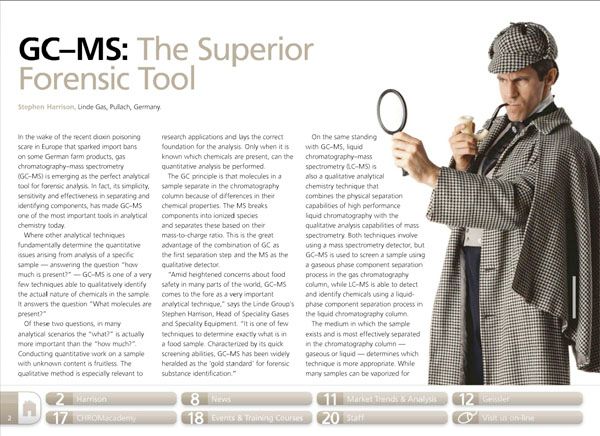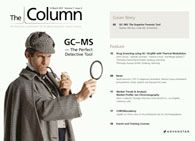GC-MS: The Superior Forensic Tool
In the wake of the recent dioxin poisoning scare in Europe that sparked import bans on some German farm products, GC-MS is emerging as the perfect analytical tool for forensic analysis.
In the wake of the recent dioxin poisoning scare in Europe that sparked import bans on some German farm products, gas chromatography–mass spectrometry (GC–MS) is emerging as the perfect analytical tool for forensic analysis. In fact, its simplicity, sensitivity and effectiveness in separating and identifying components, has made GC–MS one of the most important tools in analytical chemistry today.
Where other analytical techniques fundamentally determine the quantitative issues arising from analysis of a specific sample - answering the question “how much is present?” - GC–MS is one of a very few techniques able to qualitatively identify the actual nature of chemicals in the sample. It answers the question “What molecules are present?”
Analytical Challenges in Measuring Migration from Food Contact Materials
November 2nd 2015Food contact materials contain low molecular weight additives and processing aids which can migrate into foods leading to trace levels of contamination. Food safety is ensured through regulations, comprising compositional controls and migration limits, which present a significant analytical challenge to the food industry to ensure compliance and demonstrate due diligence. Of the various analytical approaches, LC-MS/MS has proved to be an essential tool in monitoring migration of target compounds into foods, and more sophisticated approaches such as LC-high resolution MS (Orbitrap) are being increasingly used for untargeted analysis to monitor non-intentionally added substances. This podcast will provide an overview to this area, illustrated with various applications showing current approaches being employed.
Study Examines Impact of Zwitterionic Liquid Structures on Volatile Carboxylic Acid Separation in GC
March 28th 2025Iowa State University researchers evaluated imidazolium-based ZILs with sulfonate and triflimide anions to understand the influence of ZILs’ chemical structures on polar analyte separation.
Quantifying Microplastics in Meconium Samples Using Pyrolysis–GC-MS
March 26th 2025Using pyrolysis-gas chromatography and mass spectrometry, scientists from Fudan University and the Putuo District Center for Disease Control and Prevention detected and quantified microplastics in newborn stool samples.














